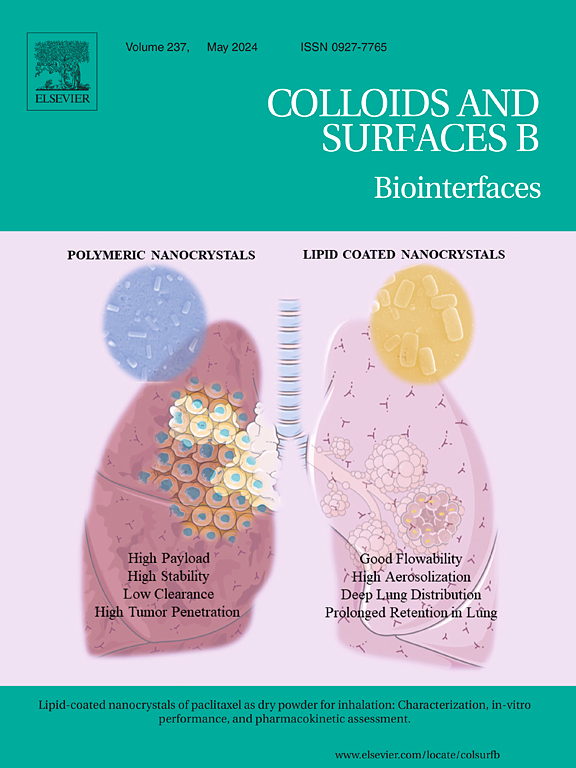Magnetotactic bacteria-mediated integrated magnetic targeted hyperthermia for in-situ deep-seated tumor
IF 5.4
2区 医学
Q1 BIOPHYSICS
引用次数: 0
Abstract
Unlike hyperthermia after intratumoral injection, the method of integrated magnetic targeted hyperthermia (iMTH) guides magnetic medium to the target site and then directly performs in-situ heating, showing great potential for effective treatment of deep-seated tumors in the body. Magnetotactic bacteria (MTB), having chain-like arranged magnetic nanoparticles within its body and active movement along an external magnetic field, are considered as a very fitted material for iMTH. However, the amount of MTB concentrated on the deep-seated tumor posed a significant challenge for the successful implementation of iMTH. Herein, we aim to validate the strategy of integrating magnetic targeting and hyperthermia. An in-situ liver tumor model in mouse was developed as deep-seated tumors. After administering the polar MTB MO-1 intravenously via the tail vein, a focusing magnetic field navigated these bacteria to effectively accumulate at the deep-seated tumor site. Immediately afterwards, this targeted aggregation of MO-1 cells triggered a localized magnetic hyperthermia directly at the cancer site under an applied alternating magnetic field. Our findings demonstrated that this hyperthermia induced by the bacteria led to the death of liver cancer cells, thereby effectively curbing the progression and growth of the cancer. These promising results suggested that an iMTH approach was developed, harnessing the power of MTB. This method stands as an exciting and potential therapeutic strategy for the treatment of deep-seated tumors, offering new hope in the fight against cancer.
求助全文
约1分钟内获得全文
求助全文
来源期刊

Colloids and Surfaces B: Biointerfaces
生物-材料科学:生物材料
CiteScore
11.10
自引率
3.40%
发文量
730
审稿时长
42 days
期刊介绍:
Colloids and Surfaces B: Biointerfaces is an international journal devoted to fundamental and applied research on colloid and interfacial phenomena in relation to systems of biological origin, having particular relevance to the medical, pharmaceutical, biotechnological, food and cosmetic fields.
Submissions that: (1) deal solely with biological phenomena and do not describe the physico-chemical or colloid-chemical background and/or mechanism of the phenomena, and (2) deal solely with colloid/interfacial phenomena and do not have appropriate biological content or relevance, are outside the scope of the journal and will not be considered for publication.
The journal publishes regular research papers, reviews, short communications and invited perspective articles, called BioInterface Perspectives. The BioInterface Perspective provide researchers the opportunity to review their own work, as well as provide insight into the work of others that inspired and influenced the author. Regular articles should have a maximum total length of 6,000 words. In addition, a (combined) maximum of 8 normal-sized figures and/or tables is allowed (so for instance 3 tables and 5 figures). For multiple-panel figures each set of two panels equates to one figure. Short communications should not exceed half of the above. It is required to give on the article cover page a short statistical summary of the article listing the total number of words and tables/figures.
 求助内容:
求助内容: 应助结果提醒方式:
应助结果提醒方式:


